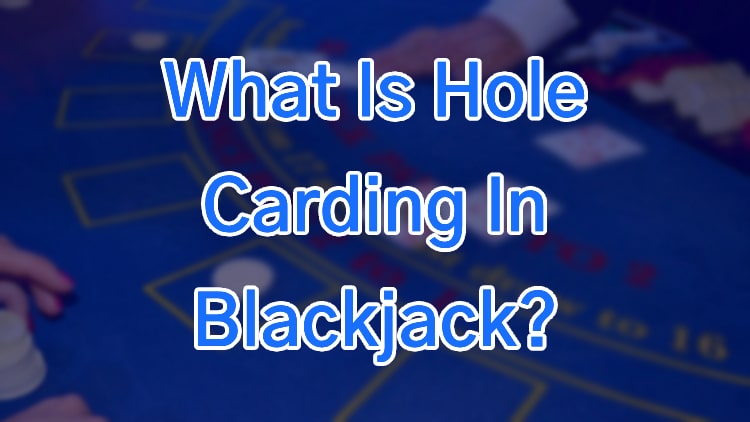
If you enjoy a game of blackjack, you've maybe come across some popular strategies. One such technique is called "hole carding".
Hole carding involves observing the dealer's hidden card, known as the "hole card", without the dealer realising it. If successful, this can give a player significant insight into the game and influence their decisions on how to play their hand.
It's not about cheating but rather keen observation and taking advantage of any visible clues. However, casinos frown upon this practice, and it's important to remember responsible gaming rules.
Let's explore how hole carding works and what you need to know about it.
What Is The Hole Card In Blackjack?
In blackjack, each player and the dealer receive cards to create hands, trying to reach a total closer to 21 than the other without going over.
The dealer is given two cards: one face-up and one face-down. The face-down card is known as the "hole card". No one knows the value of this hidden card until it's revealed during the game on the dealer's turn after all players have played their hand.
The purpose of the hole card is to maintain an element of suspense and challenge. For players, knowing the hole card's value would be incredibly advantageous.
How Does The Blackjack Hole Carding Strategy Work?
Hole carding in blackjack involves somehow spotting the dealer's hidden card, the "hole card", without the dealer noticing.
Players attempt to achieve this by carefully observing the dealer's actions during the initial deal when the dealer is drawing cards from the deck and distributing them to themselves and players since this is the only chance of the card being visible.
Players try to glance at the card as the dealer removes it from the deck and places it on the table before their upcard. Certain dealing styles or slight dealer mistakes can make the hole card briefly visible.
Armed with this knowledge, players can make better decisions on whether to hit, stand, or double down. For example, if a player knows the dealer has a weak hole card, they might choose to stand rather than take a riskier move.
It's important to understand that while hole carding can offer an advantage, it's not without risks. Casinos have measures to prevent and identify such strategies, which can lead to being asked to leave if caught.
Always remember to gamble responsibly and within the rules.
Is Hole Carding Legal In Blackjack?
The legality of hole carding in blackjack can be a bit of a grey area. Simply observing the dealer's actions without using any devices or adjustments to the game is not considered illegal.
However, casinos don't welcome this strategy. If caught, you might be asked to leave or even banned from the establishment.
Different jurisdictions have their own rules, so what might be okay in one place could be frowned upon in another.
It's crucial to keep in mind that while hole carding isn't breaking the law, it goes against the spirit of fair play in many casinos. Always be honest and up-front while playing to ensure an enjoyable and fair experience for everyone involved.
What Is The No Hole Card Rule?
The no hole card rule is a variation used in some blackjack games. In this version, the dealer does not receive a hidden card at the start of the game. Instead, the dealer only gets a second card after all players have completed their hands.
This rule is common in European blackjack.
One key difference with the no hole card rule is how it impacts player strategy. For example, if a player has been trying to track or count cards, the dealer not receiving the second card until all other hands have been played can throw off the strategy.
Understanding different rules, especially specific rules for that casino or blackjack table, such as the no hole card rule, is essential for anyone interested in playing a game of blackjack. Knowing the rules of the specific game can help you to manage expectations and know what to expect from that game.
